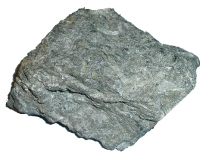
August Editorial
Ancient komatiites yield clues to the presence of extraterrestrial platinum on Earth

August Editorial
Ancient komatiites yield clues to the presence of extraterrestrial platinum on Earth
|
Komatiites are ultramafic, mantle-derived volcanic rocks which have a low silica content. These rocks also have low K2O (potassium oxide), low Al2O3, (aluminium oxide) and high to extremely high amounts of MgO (magnesium oxide). The oldest komatiies can be found in South Africa with a high concentration of these rocks found along the Komati river - hence the name.
|
The komatiites in this region date to the Achaean era (3.6-2.5 billion years ago), so true komatiites are both rare and ancient. Komatiitic rock is believed to have a melting temperature of about 1600oC, which is about 500oC hotter than basaltic lava (which melts at about 1100oC). Differences in the degree of partial melting of komatiites and that of volcanic rocks are thought to be responsible for the differences in chemical composition. Komatiites are likely to have been formed by partial melting higher than 50%. This resulted in rocks which are high in MgO but low in K2O and other elements. As the Earth has cooled down so has volcanic lava, and this is why komatiites are no longer produced - volcanoes just don't make lava hot enough any more. | |
|
There is commercial interest in komatiites because high concentrations of nickel ore are often associated with these rocks. A few years ago it was also shown that some komatiites contain a relatively high level of PGE (platinum group elements) as well. Dr Wolfgang Maier and his colleagues (at the Centre for research on magmatic ore deposits, Department of Geology, University of Pretoria in South Africa), looked at the concentration of platinum elements in the komatiites from samples collected in South Africa. They were surprised to find a low PGE contents including low Palladium/Iridium (Pd/Ir) ratios relative to komatiites from elsewhere - e.g. Australia. In studies published in the Journal of Petrology in 2003 (44 (10), pp. 1787-1804) they concluded that this was probably due to the differences in the degree of partial melting. By their theory, the low PGE contents and Pd/Ir ratios of South African komatiites were the result of sulphides having been retained in the mantle source during partial melting. The difference in Pd/Ir between the South African samples and komatiites relatively high in aluminum from elsewhere further suggests that the PGE were fractionated during progressive partial melting of the mantle. However, more recent studies by Dr Maier on the chemistry of komatiites has produced a new hypothesis to explain the level of PGE in the South African rocks. The new research just published in Nature ( 2009; 460, pp. 620 ) shows that the oldest komatiites have the lowest platinum content and the platinum content gradually increases in samples from about 3.5 billion years to 2.9 billion years ago. This suggests that somehow the Earth's mantle gained platinum over time. Dr Maier believes that as the Earth formed, its core absorbed all the available platinum, thus depleting the mantle. Then came a steady rain of meteorites which created the so-called Late Veneer – a thin surface layer of meteorite debris which happened to be rich in platinum. Through the large-scale convection processes of extensive tectonic movement, the platinum was pushed down from the surface into the mantle, slowly increasing the level of platinum over time. Hence, most early Archean (3.5–3.2 billion years old) komatiites from the Barberton greenstone belt of South Africa and the Pilbara craton of Western Australia are more depleted in PGE than late Archean and younger komatiites. This research has important implications for the study of the dynamics of mantle processes and the mechanisms that cause plate tectonics, earthquakes and volcanoes. And what started as an industrial project aiming to produce better markers for nickel ore deposits has resulted in important insights into changes in mantle composition during the Achaean era. | |
| _______________________________ | ||||
| Home | | | Shopping | | | Database |
© Biscuit Software 2004-2015
All rights reserved